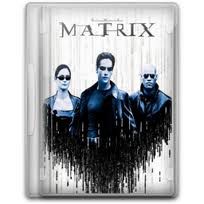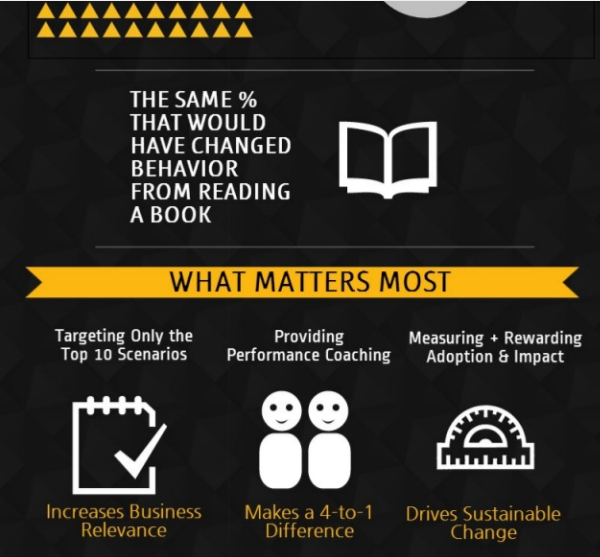By using our website, you agree to the use of cookies as described in our Cookie Policy
Knocking the Stupid out of™ Training using Change Management
Why: Normal training is just not effective!
We’ve all seen it. Professional Development Training Courses are requested, justified, vendors evaluated, and one selected. Conference calls are held, training is ‘customized’ (really just tweaked) from the same old playbook. The number of days or sessions is constantly reduced in the name of budget and time savings. Training is delivered; there is a buzz for the next two weeks that diminishes back to almost no real change as everyone returns to “The Matrix.”

This is our life, a seemingly infinite work queue with little or no time for improvement.
Is this what you want?
No? Think we can all do better? Read on…
A few of our training-only clients have serially resisted taking the extra steps needed to create real change in their organization. They say things like:
“We don’t have budget for that.”
“It crosses department boundaries that we do not have power over.”
“Can you do the four days of training in two or even one day?"
"Can you perform the training remotely?"
"Our people are too busy to attend in-person training.”
“We handle change management internally.”
“Do you know how much time and energy that would take?”
“You are just trying to expand the engagement.”
(This next one is true, but not for the reasons they suspect…)
“We don’t know how to really make training best practices stick…”
Harvard Business Review agrees with us! https://hbr.org/2016/10/why-leadership-training-fails-and-what-to-do-about-it
Do the Math
10 of your people for 3 days @ $100/hour (fully loaded or opportunity cost - $100 is low…) = $24,000 plus the training firm including travel, and you have a real expense. Are you really getting $50k+ worth of value from this exercise in frustration? How do you know? What has really changed? If the answer is nothing, stop wasting your money and staff time. Frustration
Why frustration? Your staff is exposed, assuming your training really teaches great fundamentals and world-class best practices (wow is that a bad assumption…) to a variety of tools, processes, and techniques that they are very likely not going to put to use. Some of the off-the-shelf material probably conflicts with your previously declared internal best practices. Have you made it clear to your staff that they are responsible for implementing real change by putting in place these fundamentals and world-class best practices?
No? Think we can do better? Read on…
What You Should Do
www.slideshare.net/lsaglobal/training-does-not-work
Do you want real change, automatically sustainable, with high value in your organization?
I thought so!
We want that for you too! What you should do to really
Knock the Stupid out of™ Training using Change Management
is outlined in detail below.
You must identify every single deliverable that would support your desired change. You must take ownership of all deliverables that do not have an owner.(Don’t worry, delegate that ownership after this change management project…)You must influence the owners of each deliverable you need to change. You will need at least one short document, one presentation, and a short project plan with everything laid out to perform this work.You must collaborate on the changes to each deliverable.You must work with each deliverable owner to roll out and cement each change.
There are multiple considerations in planning your Change Project -- many more than can be addressed in a short blog. For a cost-effective analysis to help you hone in on just what matters, contact us.
Project Management for your Change Project
Here is an incomplete yet useful list of some of the types of documents you might choose to change for your project to really be adopted so your organization reaps the full possible benefit:
Project
- Charter, Scope Statement, Project Plan (Processes, not project details…)
- Most of the heavy lifting is done in the probably new: Change Management Plan
- Requirements of all types: Text, Models, Prototypes
- Project Documents such as Schedule, Risk Register, Communication Matrix (which contains Stakeholder Register, RACI, and more), Project Logs, Status Reports
- Standing and other Meeting Agendas
- Any others?
Human Resources
- Job Descriptions
- Interview Scripts
- Open Position Descriptions
- Training Plans
- Compensation Plans
- Performance Plans
- Any others?
· Business Unit or Line of Business or Functional
- Standard Operating Procedures (SOPs)
- Business Processes, Models, and Rules
- Organization Charts, Roles & Responsibilities
- Workflow, Reviews, and Approvals
- Desktop Procedures
- Policies, Governance, and Compliance
- Training, “Cheat Sheets”, Repository Historical
- Metrics and Processes to measure and improve
- Standing and other Meeting Agendas
- Any others?
· Technical
- User Manuals, Technical Manuals, Support, Operations Instructions
- Test Plans and details, Acceptance Criteria
- Online Help, Error Messages, and “Wizards”
- Metrics and Processes to measure improvement
- Standing and other Meeting Agendas
- Any others?
Deliverables:
a. List each document identified in your above analysis to change (or to create if not there!) in your Schedule as a deliverable.
b. Add any project documents to support your efforts. These should be, at a minimum
i. Project Plan – for small efforts, this could contain information normally present in your Charter and Scope Statement. Your plan should lay out the main process steps you will take to handle your Scope, Resources, Risk, Time, and Cost.
ii. Schedule – repository for detail about deliverables, resources, estimates, actuals, and any other data you need.
iii. Project Logs – lists of Actions, Issues, Decisions, Risks, Glossary, and anything else you need to keep track of.
Dependencies: Order (your best guess) deliverables to complete first (such as job description prior to performance goals…). Resources with names, or at least roles, for every deliverable. These are the people who will approve and collaborate. Work & Duration: If you want this granularity, add these Estimates and leave room for Actuals and “Estimates to Complete”. Dates: As with any other schedule building, Don’t Type In Any Dates! This is what the scheduling software is for…
Authored by Darrel Raynor, PMP, MBA (The Management Advisor guy) Google+ DARaynor@DataAnalysis.com www.linkedin.com /in/DarrelRaynor
With: Human Resources input from Doug Whatley (The Contrarian Voice guy) www.linkedin.com/in/DougWhatley
If you Want Help Implementing?
Contact us DARaynor@DataAnalysis.com for help or just to talk over your situation. Results from prior Training coupled with Change Management has improved operations and projects. We are in-process with several clients on realizing full benefit from training once it is aligned with their business objectives and not just tossed against the wall to see what sticks...:
Aligning Training with desired best practices.
Aligning performance expectations with desired best practices.
Project Management Office (PMO) and Business Analysis COE (Center of Excellence), possible roles in the change process.
Simple Change Management planning for your own internal training efforts.
Speaking engagements to bring these tactics to your larger organization.
We would be happy to talk these topics over with you anytime!
"Do not let any unwholesome talk come out of your mouths, but only what is helpful for building others up according to their needs, that it may benefit those who listen." Ephesians 4:26 NIV.
‹ Back



